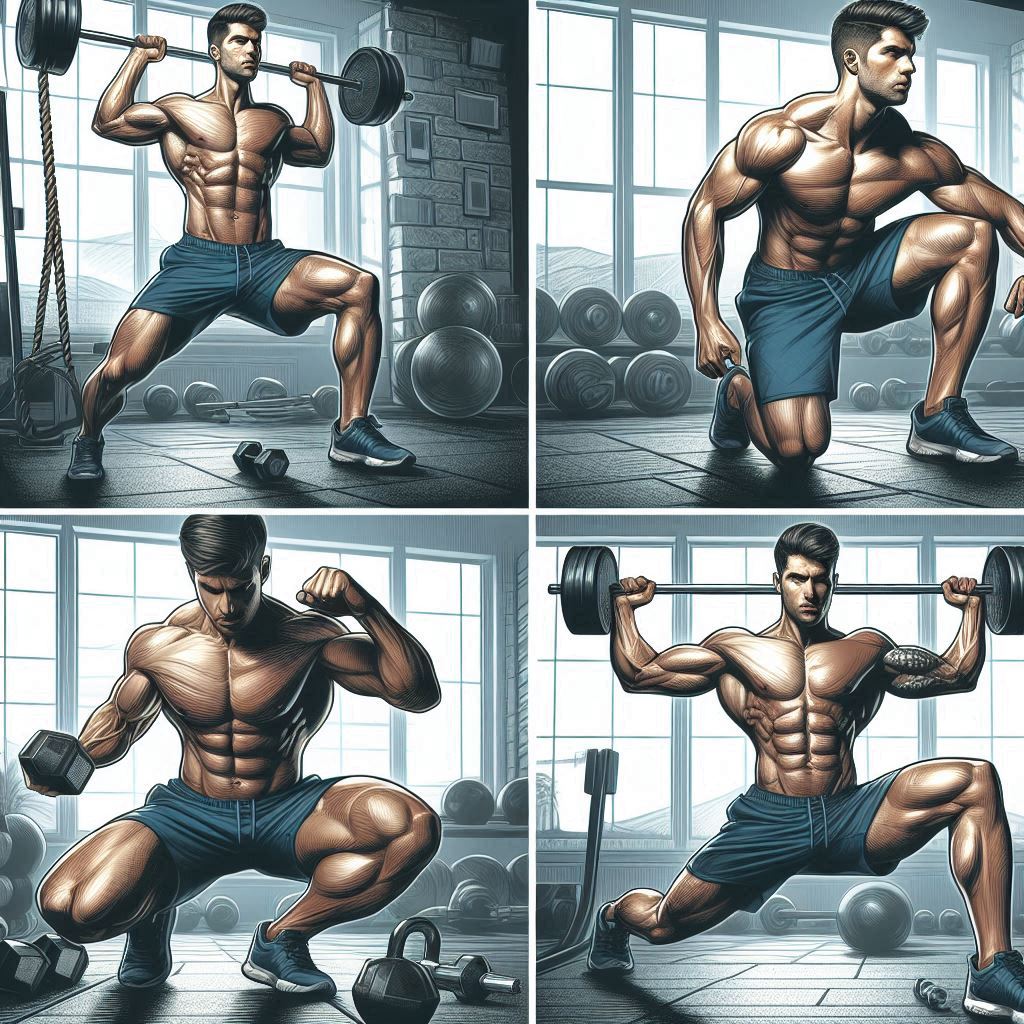Numerous variations exist within the category of “abdominal muscle training.” Small points might affect not just the technique but also the intensity. These exercises target the abdominal muscles and are recommended for experienced users. If you are not an exerciser or have not exercised your abdominal muscles, please lower the number of repetitions and minimize the load. Doing so could lead to damage or accidents.
Four challenging workouts to strengthen your abdominis recti (in order of difficulty)
It’s critical to exercise your oblique and transverse abdominal muscles in a balanced approach in order to strengthen your abdominal muscles. This section will cover rectus abdominis workouts, which are specifically designed to tone this muscle, which is the target muscle for a six-pack.
This muscle at the front of the abdomen is called the rectus abdominis, or “six pack.” It needs well-developed rectus abdominis to achieve six-pack abs.
Crunch: ☆ (Difficulty)
- With your hands behind your head, lie on your back.
- Raise your feet and bend your knees and thighs to a 90-degree angle.
- Curl your stomach up while letting go of the breath, focusing on your belly button. Hold this posture for five seconds.
(It’s crucial to remember to curl your tummy up instead of lifting your torso.) - Breathe in and raise your body slowly back up.
Point
If you’re not used to it, you can elevate your legs by placing your feet on a stool or by bending your knees so that you sit with your legs crossed.
If your muscles aren’t strong enough, you’ll try to stand up by using your arm strength. It’s critical to be aware of curling your body without utilizing your arm strength. It is simple to tension your arms, shoulders, and neck, so proceed with caution.
The quantity of times
Experts perform three sets of twenty reps. But it’s crucial to perform 3 sets of 10 repetitions, etc., at a comfortable speed until you become acclimated to it. After you’ve acquired the proper form, it’s preferable to increase the number of repetitions because accuracy is more crucial than quantity.
One-Knee Crunch (Level of difficulty: ☆☆)
- Place your hands near to your thighs while lying on your back on the floor with your legs slightly raised.
- As you release the air, raise your upper body by curling your stomach and raise your right knee and thigh to create a 90-degree angle. Touch both hands now by putting them in between your thighs. (Wivel your upper body to touch both hands, then round your stomach.)
- Hold it there for five seconds at position 2.
- Breathe in and then slowly lower your body again.
- Use the left foot in the same manner.
Point
It’s crucial that your thighs do not narrow any more than 90 degrees and come in contact with your face when bending your knees and thighs to a 90-degree angle.
If it’s hard to touch both hands, try bringing them closer to your thighs without adjusting your form, and twist your stomach.
The quantity of times
If you’re very skilled at it, you could perform three sets of ten repetitions each, alternating between the left and right.
Once more, it’s critical to begin with a moderately challenging amount of repetitions. Don’t exert too much pressure on yourself if your muscles are weak.
Legsolost (Difficulty: ☆☆☆)
- While lying on your back, extend your legs to a 90-degree angle. Bend both knees slightly and bring them together.
Your hands should be by your sides. - Curl your stomach and raise your hips as you exhale, then hold the posture for two seconds.
- Slowly take a deep breath and step back to the beginning position.
Point
It’s crucial to avoid using your arms’ or shoulders’ strength. However, simply lifting and lowering your legs won’t work your abdominal muscles. Rectus abdominis is one of the muscles you are using, so pay attention to it. Try pointing your foot soles toward the ceiling and visualizing yourself pressing the ceiling with them to make this exercise easier.
The quantity of times
If you’re very skilled, you could complete three sets of ten repeats.
There’s no hurry, so try your hardest and remember to use your abdominal muscles.
V-Sit (Difficulty: ☆☆☆☆☆)
- Raise both legs slightly while lying on your back on the ground.
As though you were raising your arms in the air, extend your arms to the sides of your face. - Bring your hands and toes closer together as you exhale by lifting your upper body and legs.
(It’s crucial to curl your tummy in order to elevate your upper body.) - Return your body to the starting posture gradually as you inhale.
Point
It’s crucial to accomplish this without utilizing momentum. Raise your legs to a 90-degree angle, but avoid using your core muscles if you lean them too far toward your head or are overly aware of bringing them closer to your hands. Make a conscious effort to tense your abdominal muscles and curl your stomach.
It will be challenging for someone with weak muscles to bring their hands and feet closer together, as demonstrated in the figure. Make a conscious effort to curl your stomach as much as you can.)
The quantity of times
Professionals can complete three sets of ten reps. On the other hand, V-sits are a vigorous workout. Performing a sufficient number of sets and repetitions is crucial.
Be cautious because it can easily strain your lower back if you don’t have strong abdominal muscles.










